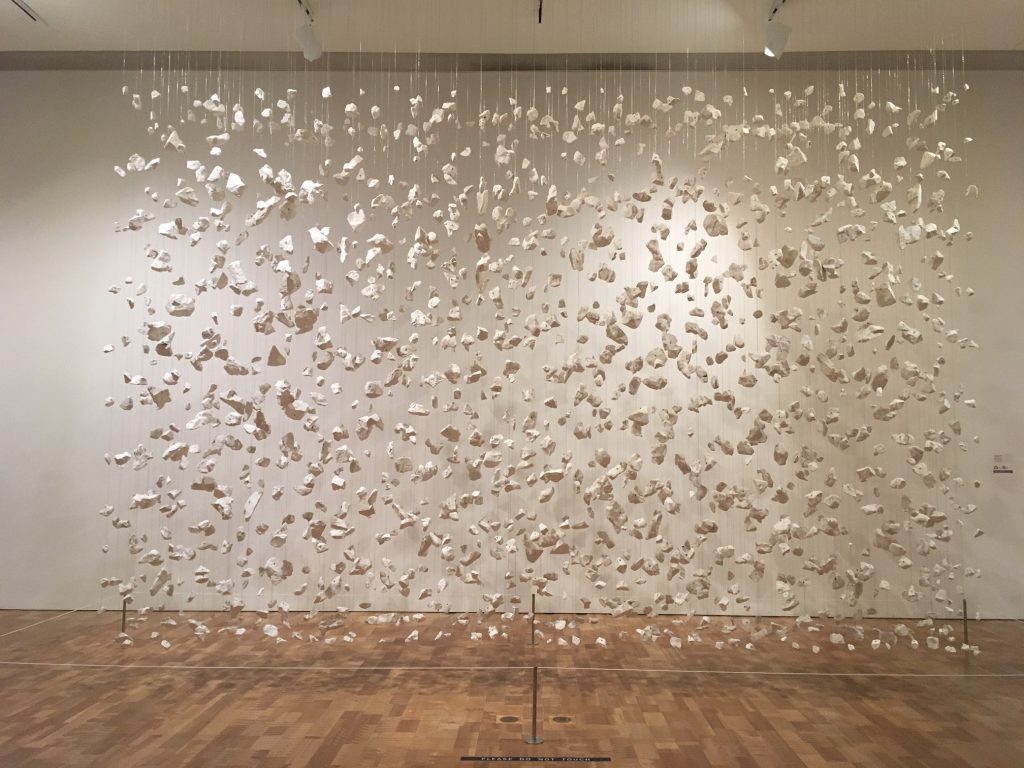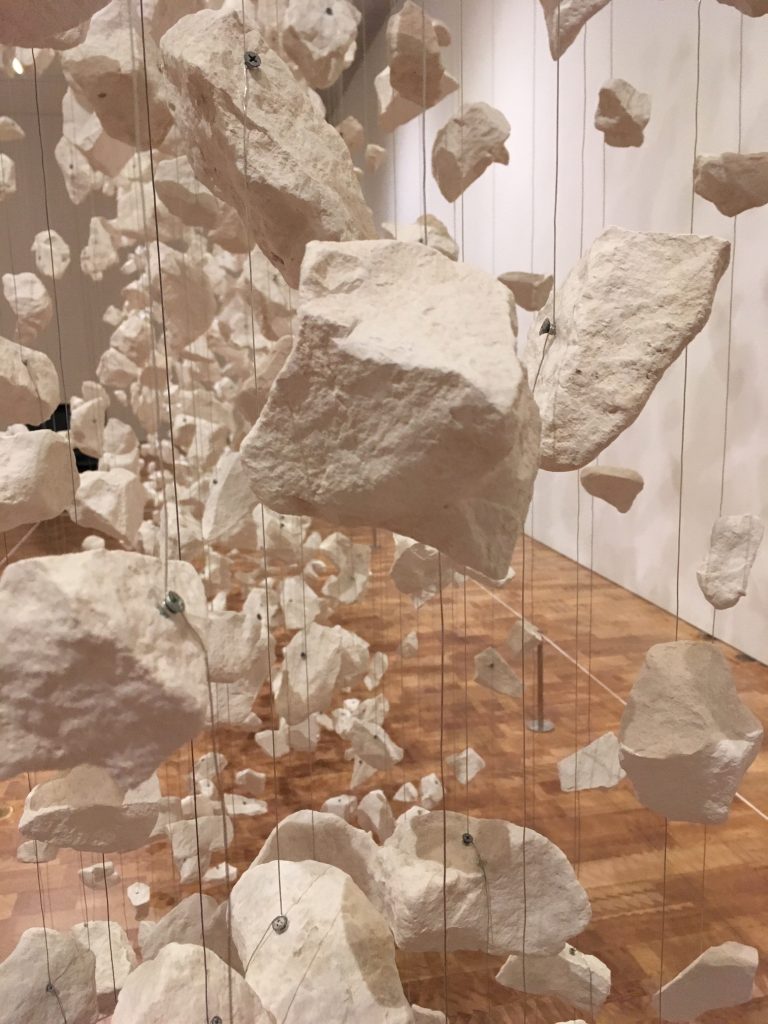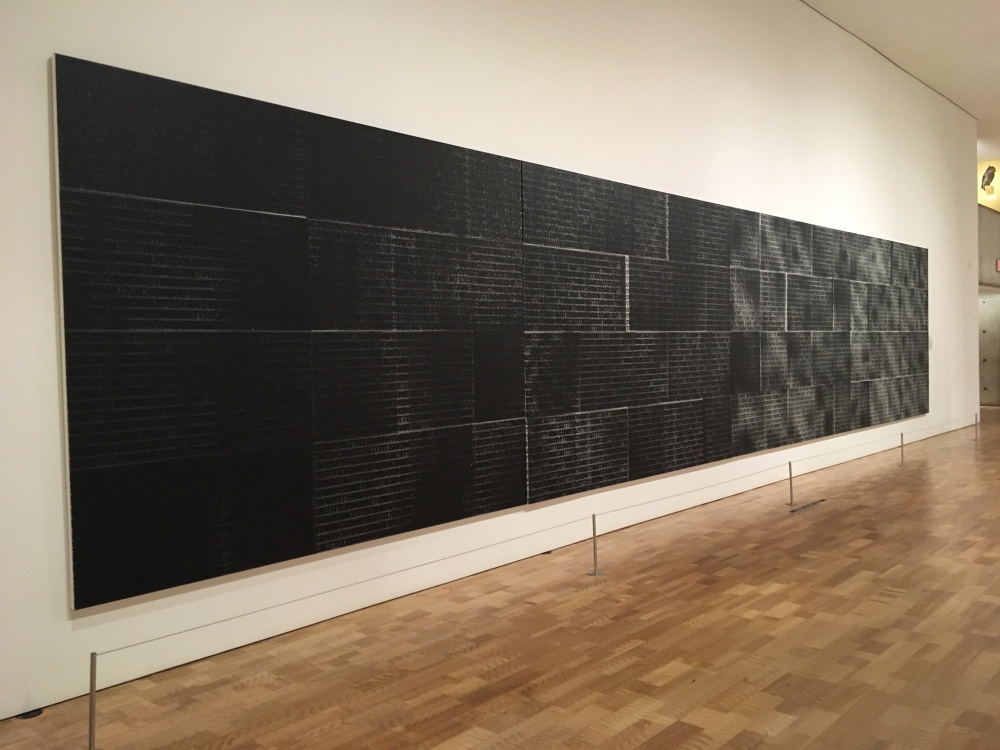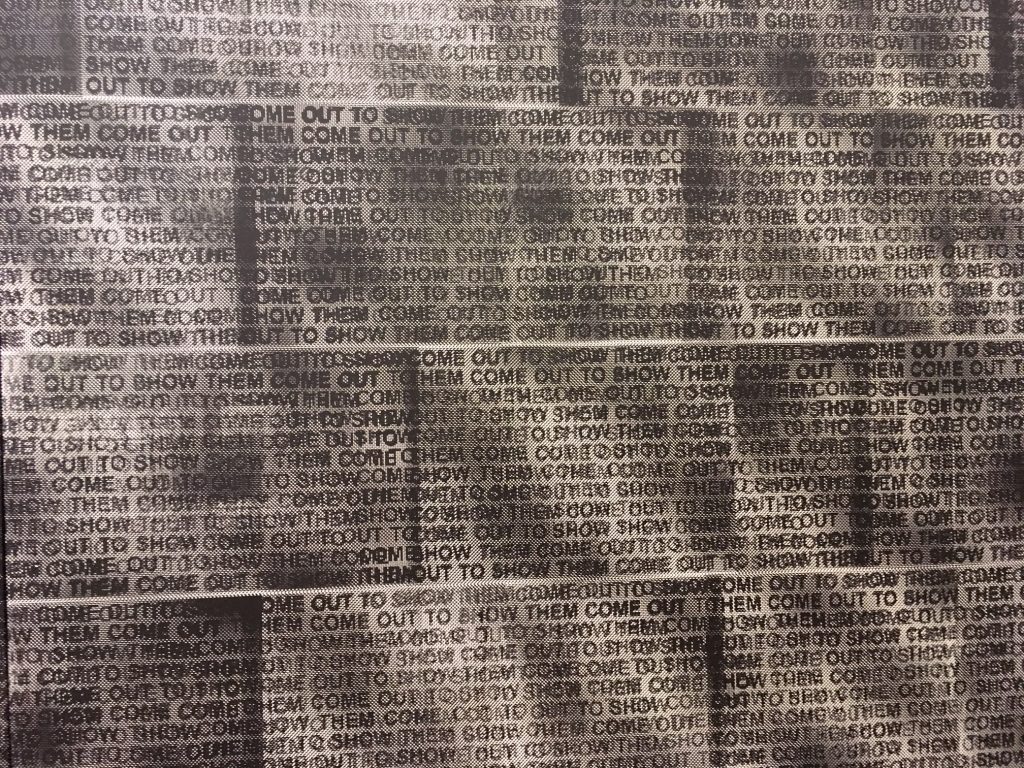
One of the fun things about exploring new cities is seeing their art museums. We had one day in wonderful Milwaukee where we sampled their best coffee, the Domes at Mitchell Park, the Harley Davidson Museum and the architecturally amazing Milwaukee Art Museum.
Here are some of the highlights of the latter. You can see my preference for abstraction using fiber and mixed materials in these choices.
I’ll say more about that once you have had a chance to see these four pieces.
-Cornelia Parker-
Cornelia Parker is a British sculptor and installation artist whose 1999 installation Edge of England is constructed from chalk, wire and wire mesh. Parker’s work often feature household objects that have been broken and reimagined into new abstract structures.



-Glen Legion-
Glenn Ligon is an African-American conceptual artist whose work explores race, language, desire, sexuality, and identity. His monumental 2014 silkscreen on canvas piece Come Out #5 took up a whole wall of the museum. This text-based piece was inspired by the 1966 spoken-word piece by composer Steve Reich, who was in turn influenced by the Harlem race riot of 1964. The layers of the text Come Out become so dense that the piece morphs into abstraction.
-Robert Morris-
American sculptor Robert Morris was an important and controversial figure in the Minimalist movement. His sculptures, performances and critical writing explored facets of conceptual art and ideas about ephemerality. His spare 1970 piece Untitled is composed of industrial felt that hangs gracefully on the wall.


-Truman Lowe-
Truman Lowe was an American Ho-Chunk sculptor and installation artist known for large site-specific installation pieces utilizing natural materials. Like many contemporary Native American artists, Lowe’s art tells stories about the Winnebago people and his relationship to the environment. Inni-che-ru-he (Stone Wall) from his Canyon series is a massive and delicate installation made with chalk on paper and willow branches.
Each of these pieces excites me. They all refer to the grid, even if they are breaking it like Cornelia Parker and Robert Morris. These artists are all using humble or industrial materials in innovative ways. They gravitate towards a pared down or stark statement. And all of these pieces are large, breath-taking and elegant.

And let me not forget to say that they were all hung in the soaring, winged, Milwaukee Art Museum, completed in 2001 by Spanish architect Santiago Calatrava, featuring a moveable sunscreen, with a 217-foot (66-metre) span.
Although it wasn’t initially on my radar, Milwaukee is an outstanding cultural destination and the Museum was a gem.






